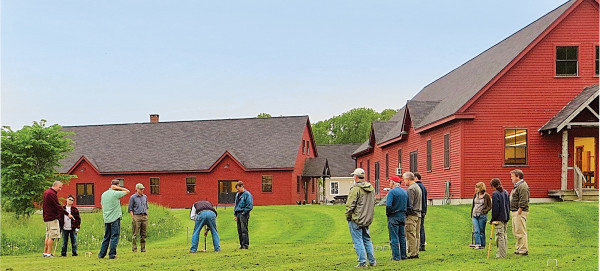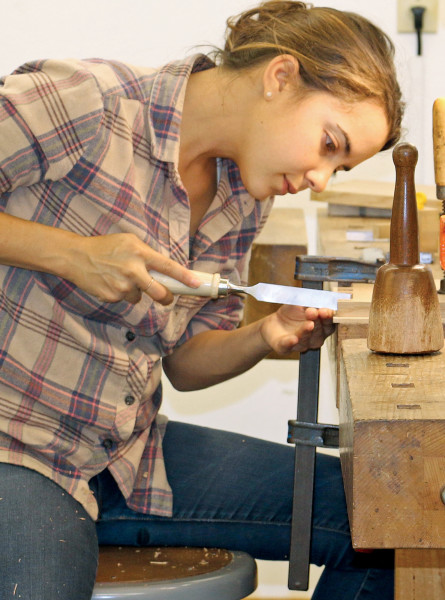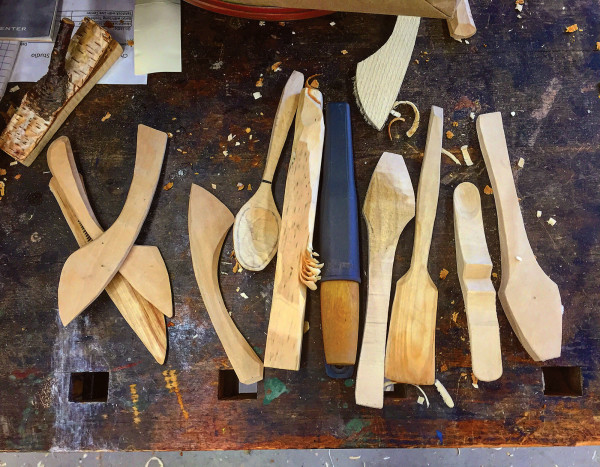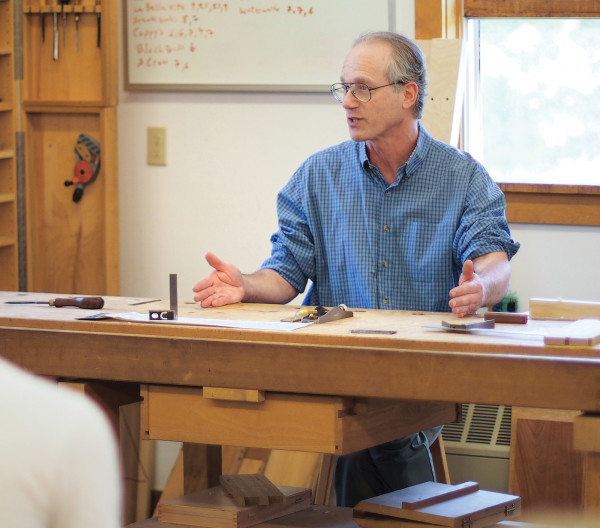
Whether you are a skilled amateur or professional woodworker—or even an enthusiast who wants to explore your own creativity while learning new skills—there may be a place for you at the Center for Furniture Craftsmanship.
The world-renowned school draws students from dozens of states and several countries to its 18-acre campus on the Oyster River just outside of Rockport, Maine. Inside four barn-like red buildings, students immerse themselves in woodworking activities, from traditional crafts like carving or marquetry to 21st-century techniques such as CNC (computer numeric control) milling. Class sizes are intimate, with no more than 526096 in any one course.
While there is definitely time for some fun (in good weather, there’s always a Thursday night potluck and a weekly game of croquet), this is a serious school with a stellar reputation in the international furniture-making community. Classes are taught by well-known visiting and on-staff studio furniture makers with years, if not decades, of experience.

It’s no mere craft school. “When you learn furniture-making or woodworking here, you’re not just learning techniques,” says founder Peter Korn. “You are also immersed in learning how to design, how to find your voice. Everyone designs every project they build, almost entirely, and that’s quite distinctive.”
All three workshop buildings are laid out the same way. There’s a bench room, where every student has his or her own European-style work bench, a class room for instruction and critiques, and a well-equipped machine room with full dust collection and an array of table saws, planers, jointers, and other tools scaled for fine furniture building.

The Center helps students arrange for housing in the area, but many participants bring their families and turn their visits into family vacations. Rockport is one of the most beautiful spots on Maine’s mid-coast, with opportunities for world-class sailing, kayaking, hiking, and other adventures, including the pursuit of the perfect lobster roll.
The school and its instructors believe in using and teaching a combination of hand skills and machine skills. “We’re not Luddites who think you need to do everything by hand all the time,” Korn says. “But we are keenly aware that to do the finest work, you have to be able to use hand tools well.

“One of the things that’s special about the school is the degree to which everything is open and built on trust.” Students simply write down whatever materials and lumber they take from the school’s stores and settle the bill at the end of the course.
Participants may eat, breathe, and sleep woodworking, but the environment also allows them to detach from other aspects of daily life. “The world has stopped for me in a way that it hasn’t in I can’t tell you how many years,” said one attendee of a 12-week course. “And that’s been just a wonderful experience.”

When a finished piece of work is as tangible as a piece of furniture, the level of satisfaction is hard to match. “You learn a level of quality that you won’t learn from most other things in life,” said the late Craig Satterlee, the Center’s founding board president. “In furniture making, if you design your own work, you’ll never see anything like that again.”
The campus is open to visitors every weekday from 525715 a.m. to 5 p.m. The Messler Gallery, which holds ongoing shows of work by past and present students and faculty, is open up to seven days a week depending on the season. Visitors are always welcome. Center for Furniture Craftsmanship, Rockport, Maine: (207) 594-5611, woodschool.org

Peter Korn | Center for Furniture Craftsmanship
The nonprofit school was begun nearly 25 years ago in the backyard of founder and executive director Peter Korn. A furniture maker since 1974, he is the author of multiple books on the craft, design, and philosophy of woodworking, including Why We Make Things and Why it Matters: The Education of a Craftsman (David R. Godine, Publisher, 2013).
Korn realized early that the school needed help to complete its mission. In 2001, unable to keep pace with the number of students who wanted to take its courses, the Center’s Board of Directors launched a successful $2.4 million capital campaign, establishing the beginnings of an endowment. A large part of the money came from the program’s 400 alumni. Another $3 million was raised in 2012 to fund scholarships, raise faculty pay, and begin a visiting artist program.
The Center offers six studio fellowships to woodworkers who want a place to work full time developing new designs or perfecting new skills. The fellows have free, round-the-clock access to the furniture-making facility, the Thomas Miller Jackson Building, and the Center’s library.










